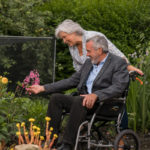Spending time with nature has been proven to have a good effect on the health and well being and has been thoroughly studied by the Scientific community.
These known benefits include:
- Increase in pleasure and sense of worth levels
- Rise in cognitive abilities
- Reduced stress response, blood pressure, pulse rates and cholesterol levels
However, due to the rise in urbanization, people have less access to nature in their daily lives and nowadays, most Australians spend over 90% of their time indoors.
These matches with the information of growing levels of obesity and nearly half of Australians undergo mental health conditions within their lifestyle. Since increasing our time spent outside with nature is not always possible, particularly in areas like workplaces, schools and hospitals, understanding how to integrate the physiological and psychological advantages of nature into our indoor surroundings is an increasingly vital area of research.
Research show that simply having a view of nature from a window can have major positive effects, such as shorter postoperative hospital stays, stimulated feelings of comfort in patients at therapy centers, and enhanced relaxation levels of employees in offices. Consequently benefits, such as better cognitive functioning in office setting, rise in tolerance of pain in hospital and reduced blood pressure and heart rate have been shown with indoor plants and tree furniture, thus with a wooden element. An area of study that focused on integrating the results of empirical research into the quality of the built environment is also called as Evidence-based design (EBD). Originating from the field of environmental psychology, it functions on the idea that the design of the built environment essentially impacts the community within it. Designs of physical features that can lead to stress-reduction, efficiency and overall wellbeing, are particular focused. Looking at nature in both outdoor and indoor settings has health and well being advantages for people have been proven by recent studies. Simply having laminated timber flooring provides health benefits to an individual. Thus, it is reasonable to examine whether wood, a natural material, produces similar effects.

The Benefits of Wood On the Body
The initial physiological reaction of 14 people sitting in rooms with either wooden or steel wall paneling has been compared in a Japanese study. Whilst facing the paneled wall covered by a curtain, the pulse and heart rate of each subject was measured every second for 20 seconds. This was followed by 90 seconds without the curtain and the wooden or steel panel was visible. Exposure to wooden panels notably lowered the blood pressure of subjects, while exposure to steel panels considerably increased it have been proven in the study.
Heart rates and health of 30 people who rested in a Stone Pine bed for 21 days were inspected by an Austrian and compared it to their heart rates when sleeping in a wooden imitation bed for 3 weeks. The study found out that sleeping in a stone pine bed reduced heart rates by 3500 beats per day compared to when subjects were sleeping in a fake wooden bed.
An Austrian study that lasted over a year examined 36 high school students aged 13-15 years old who were taught in either a classroom equipped with a linoleum floor, plasterboard walls and chipboard cupboard or a classroom furbished with floors, ceilings, cupboards and wall panels made of solid wood. The results illustrated notable differences between the two groups, with students taught in the wooden classrooms having lowered heart rates and decreased awareness of stress from exchanges with teachers. Comparably, students taught in the classroom without wood had increased heart rates and had greater stress responses.
The existence of wood has helpful physiological effects, lowering blood pressure heart rate and stress responses when compared to other material types have been clearly demonstrated by the studies examining the effects of wooden rooms and furnishings. It is even in the case of workers for tree services such as tree pruning. These physiological responses are exclusively controlled by the sympathetic nervous system (SNS). SNS commencement occurs when the body gets ready for stress, increasing blood pressure and heart rate, while inhibiting digestion, recovery and the immune system in order to face any immediate threats it recognizes. Being exposed on long term basis to surroundings that bring on stress can set off serious health cost, including obesity, type 2 diabetes and related cardiometabolic complications.
Exposure to stress and stress hormones during early days and adolescence increases the likelihood of individuals getting stress-related mental disorders later in life, as well as manipulating the timing of puberty, according to studies. School stress can be reduced by integrating natural wood into the classroom can therefore have noteworthy and long lasting positive effects on the brain.
44 elderly Japanese residents were recipients of a study observing their behaviors and health status while using wooden tables, chairs and tableware at a care home was examined and compared to residents using plastic products. The outcome pointed out that the use of wooden products improved the number of interactions between individuals (i.e. more talkative and more willing to engage with one another), enhanced emotional state and expanded self-expression in a positive way.
A Canadian study has shown that the colors and texture of wood draw out feelings of ‘warmth’, ‘comfort’ and ‘relaxation’ in the recipients, all emotions that have been shown to reduce stress, anxiety and recovery times in hospital by studies investigating the influences of music, plants and therapeutic massage.
A study in New Zealand presented 69 adults with images of 10 modern corporate interiors, selected from newly published books displaying modern design. Five of the interiors depicted a wooden environment, whether it was with the slightest wooden element or a curved timber feature, whilst the other five did not feature wood at all. Participants were asked to ‘identify the organization you would most like to work for and least like to work for’, followed by selecting three adjectives from a list of 24 to indicate their first impressions of each organization. First impressions can be subjective with the presence of wood products within a corporate environment, with study subjects significantly more likely to want to work for organizations that featured wooden furnishings. Feelings of modernism, liveliness and relief were suggested in whilst offices without wood conveyed feelings of being impersonal and uncomfortable.
Significant economic impact could be attained with the positive psychological outcome of people interacting with wooden products. Social relations that lead to opportunities for self-expression in old people lowers the risk of dementia, a disease that currently costs Australia over $5 billion annually and effects 44 million people worldwide have been shown on the recent studies. Hospital stays have been shortened through lowered recovery times also reduce costs to the medical system, while the improved first impressions of organizations will draw business to the Australian market.







